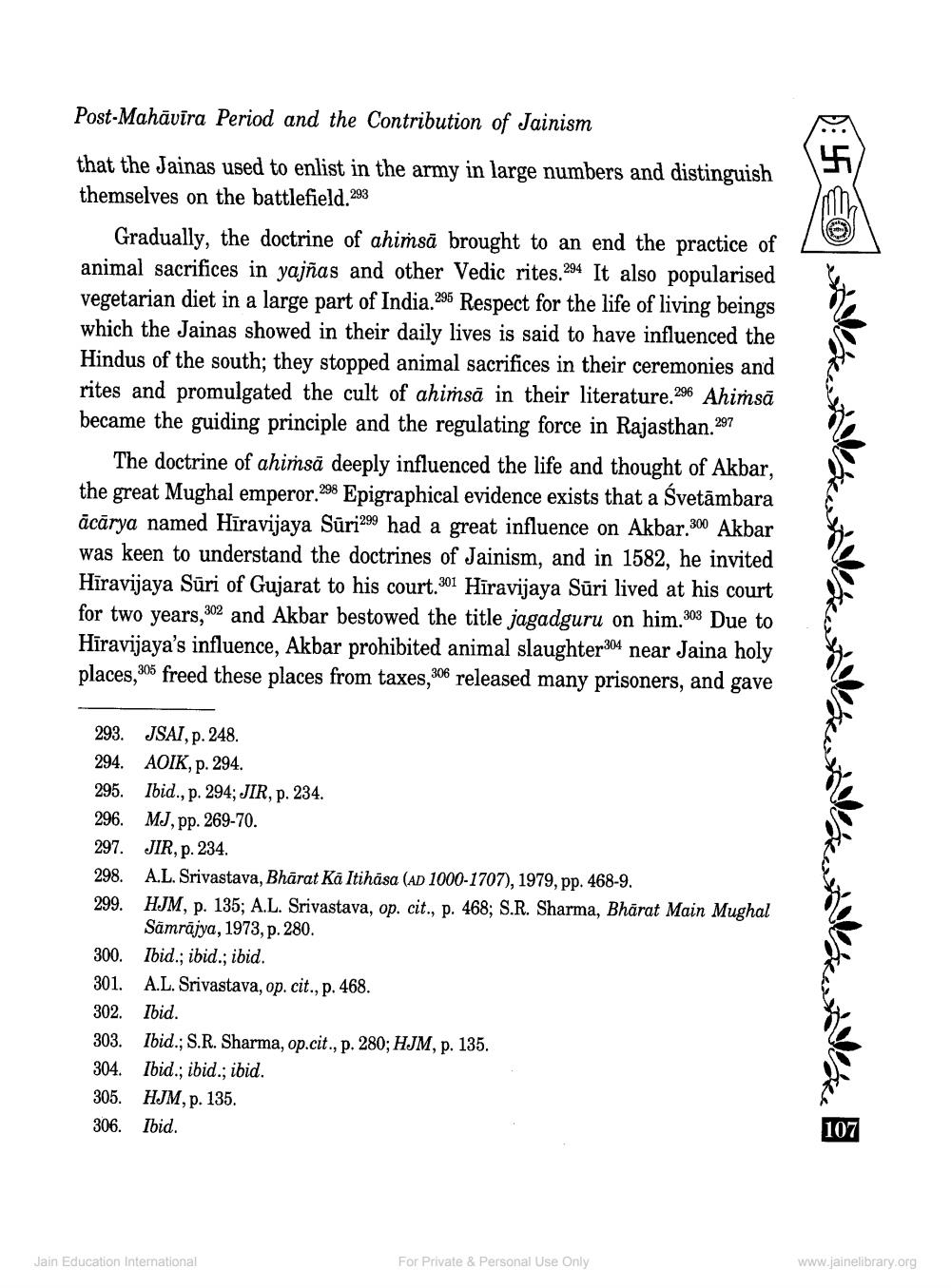________________
Post-Mahāvīra Period and the Contribution of Jainism
that the Jainas used to enlist in the army in large numbers and distinguish themselves on the battlefield. 293
Gradually, the doctrine of ahiṁsā brought to an end the practice of animal sacrifices in yajñas and other Vedic rites.294 It also popularised vegetarian diet in a large part of India. 295 Respect for the life of living beings which the Jainas showed in their daily lives is said to have influenced the Hindus of the south; they stopped animal sacrifices in their ceremonies and rites and promulgated the cult of ahimsā in their literature.296 Ahimsā became the guiding principle and the regulating force in Rajasthan.297
The doctrine of ahiṁsā deeply influenced the life and thought of Akbar, the great Mughal emperor.298 Epigraphical evidence exists that a Svetāmbara ācārya named Hīravijaya Sūri299 had a great influence on Akbar.300 Akbar was keen to understand the doctrines of Jainism, and in 1582, he invited Hīravijaya Sūri of Gujarat to his court.301 Hīravijaya Sūri lived at his court for two years,302 and Akbar bestowed the title jagadguru on him.303 Due to Hīravijaya's influence, Akbar prohibited animal slaughter304 near Jaina holy places,305 freed these places from taxes, 306 released many prisoners, and gave
293. JSAI, p. 248. 294. AOIK, p. 294. 295. Ibid., p. 294; JIR, p. 234. 296. MJ, pp. 269-70. 297. JIR, p. 234. 298. A.L. Srivastava, Bharat Ka Itihāsa (AD 1000-1707), 1979, pp. 468-9. 299. HJM, p. 135; A.L. Srivastava, op. cit., p. 468; S.R. Sharma, Bhārat Main Mughal
Sämrājya, 1973, p. 280. 300. Ibid., ibid.; ibid. 301. A.L. Srivastava, op. cit., p. 468. 302. Ibid. 303. Ibid.; S.R. Sharma, op.cit., p. 280; HJM, p. 135. 304. Ibid., ibid., ibid. 305. HJM, p. 135. 306. Ibid.
107
Jain Education International
For Private & Personal Use Only
www.jainelibrary.org




